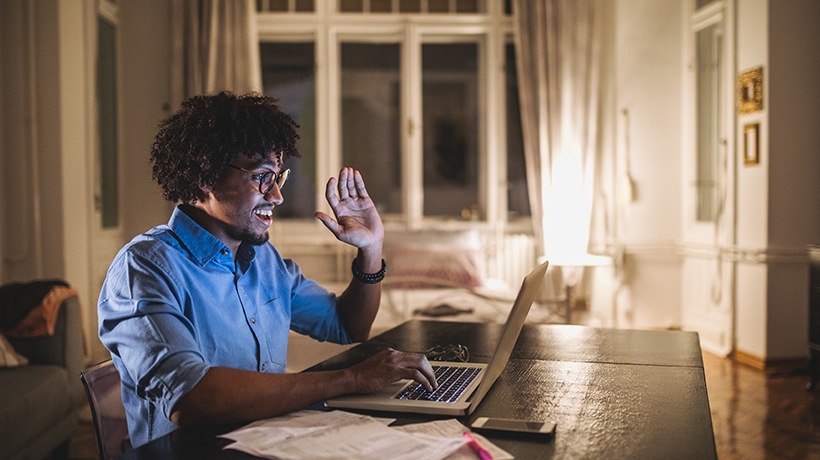Does It Help Or Hurt The Learning Process?
The COVID-19 pandemic has left 87% of the world's student population affected by school closures (data source: UNESCO). While schools and colleges are still strategizing over reopening, how are the students responding to the new era of remote learning?
Students Who Have Previously Taken Online Classes Are More Prepared
Previous experience with eLearning seems to be a key factor in the preparedness, as reported by Barnes & Noble Education [1]. The survey conducted in March 2020 found that 60% of respondents found the switch to be relatively easy.
The setting of their learning environments is another reason for worry. Not everyone has a home environment that will allow them to work or study from home. 64% of students expressed concern over staying motivated and maintaining focus, as they get easily distracted.
Students at a collegiate level seem to be more understanding of the scenario. For many, the assignments and readings were mostly done online already. Today, even several standardized and aptitude tests [2] are also conducted online. The only difference is that the lectures have moved online.
Students Miss The Social Aspects Of The Learning Experience
While teachers are focusing on providing engaging eLearning experiences, 55% of students still find the lack of social interactions troubling. They learn better with fellow students, and for 45% of students, this could lead to underperforming in their academics.
Students have a strong desire to return to in-person connections. Not seeing other students and faculty in person is having an impact, and even contributes to anxiety, nervousness, and worry. The abrupt change in lifestyle, not limited to online lessons, has left many students struggling with how to succeed academically.
Most research on remote lessons shows that in-person courses are, on average, more effective. The social environment motivates students to engage and perform better. Students who already struggle in in-person classes are likely to struggle even more with eLearning.
Global Impact Of Remote learning
Students from different countries are faced with a different set of challenges, based on their location and accessibility. Not every country has been able to continue providing online lessons amidst the shift.
Lack of reliable internet connection, access to smart devices, and the absence of a proper learning environment could all lead to students struggling to cope up with remote learning. In some countries, such as India and China, the government has taken the initiative to deliver online classes through televisions [3]. In Africa, only a fraction of students even have access to remote learning.
As nations and teachers are getting creative, students also feel encouraged to find ways to immerse themselves in new learning experiences.
Coping With Remote Learning
Students find that eLearning is not without its challenges, and the most important one is not having a routine to follow. The only way to manage classes and motivate oneself is by staying organized. There is also an overwhelming workload, including homework and preparing for exams. There is widespread confusion over course requirements as well.
That being said, there are indeed students who are quite fond of the eLearning opportunity. Being able to set their routine has had a positive impact on many, and they are willing to take up the challenge of remote learning.
EdTech Is Here to Stay
There is no denying that eLearning will continue to play a prominent role in the education system. The compelled shift to remote learning might be the catalyst needed to create a new and more effective method of teaching students. Many educational institutions have already planned to make eLearning a part of their future. Both students and teachers have to be equipped to adjust to the "new normal" of education.
There is also a rising argument over whether eLearning might actually replace traditional learning practices. With the rising number of jobs that need no degree [4] and the student debt mounting up, more students might prefer the relatively less expensive and flexible choice of remote learning. However, thanks to this switch, students now can compare digital learning experiences to in-person education and determine the best for them.
Will we shift to a hybrid model? Or, if so, is it the best approach for students? In the current experiment, both students and teachers should record which classes are faring well when taught remotely and which ones are not. This data could inform future decisions, and help determine which courses should be supplemented by technology to impart the most effective learning experiences for students.
References:
[1] Barnes & Noble Education Survey Reveals College Student Preparedness Split
[2] Aptitude Test: Free Practice Aptitude Test Questions
[3] Govt turns to ‘TV classrooms’ as online lessons prove to be a challenge during lockdown
[4] The 30 highest paying jobs without a Degree








